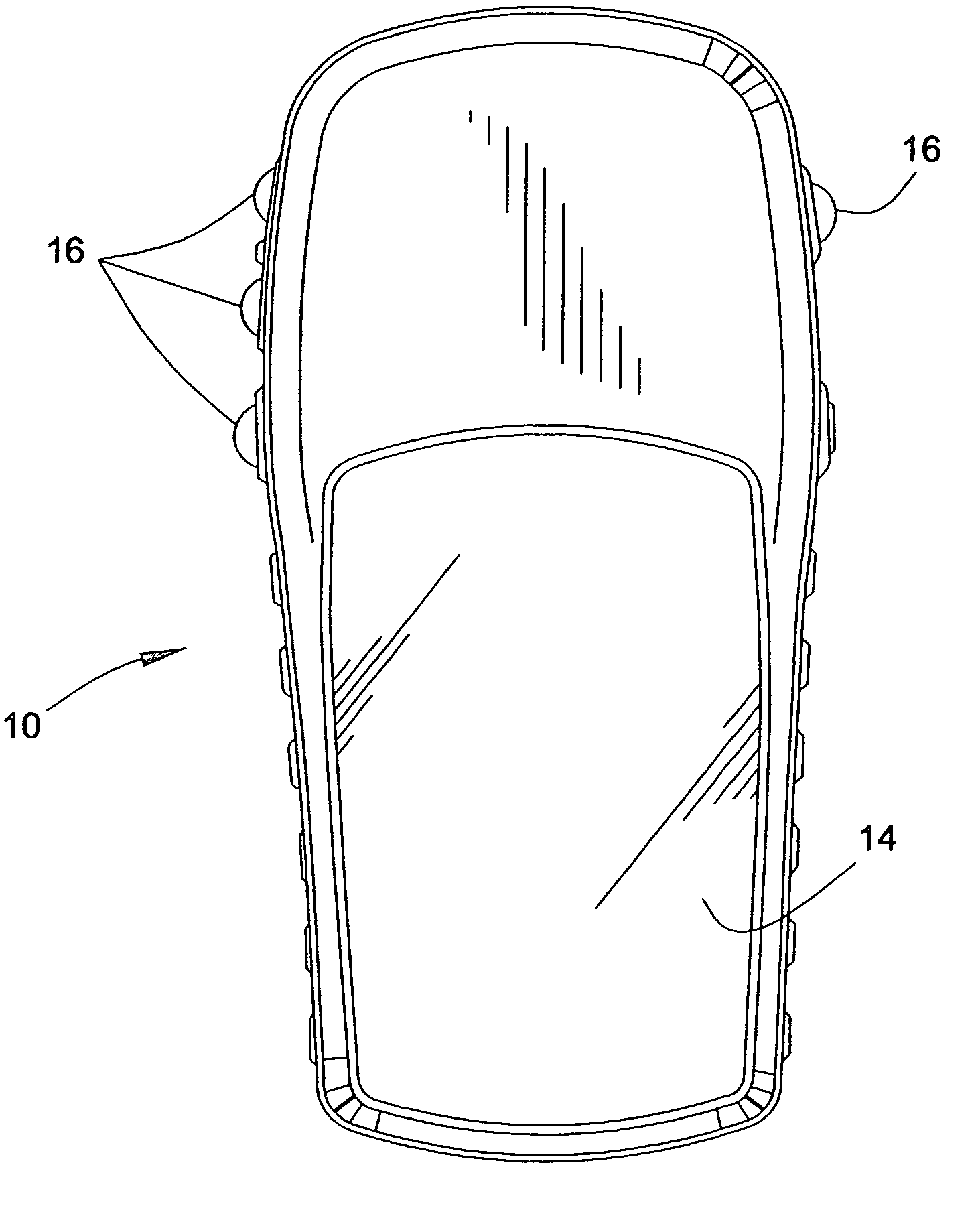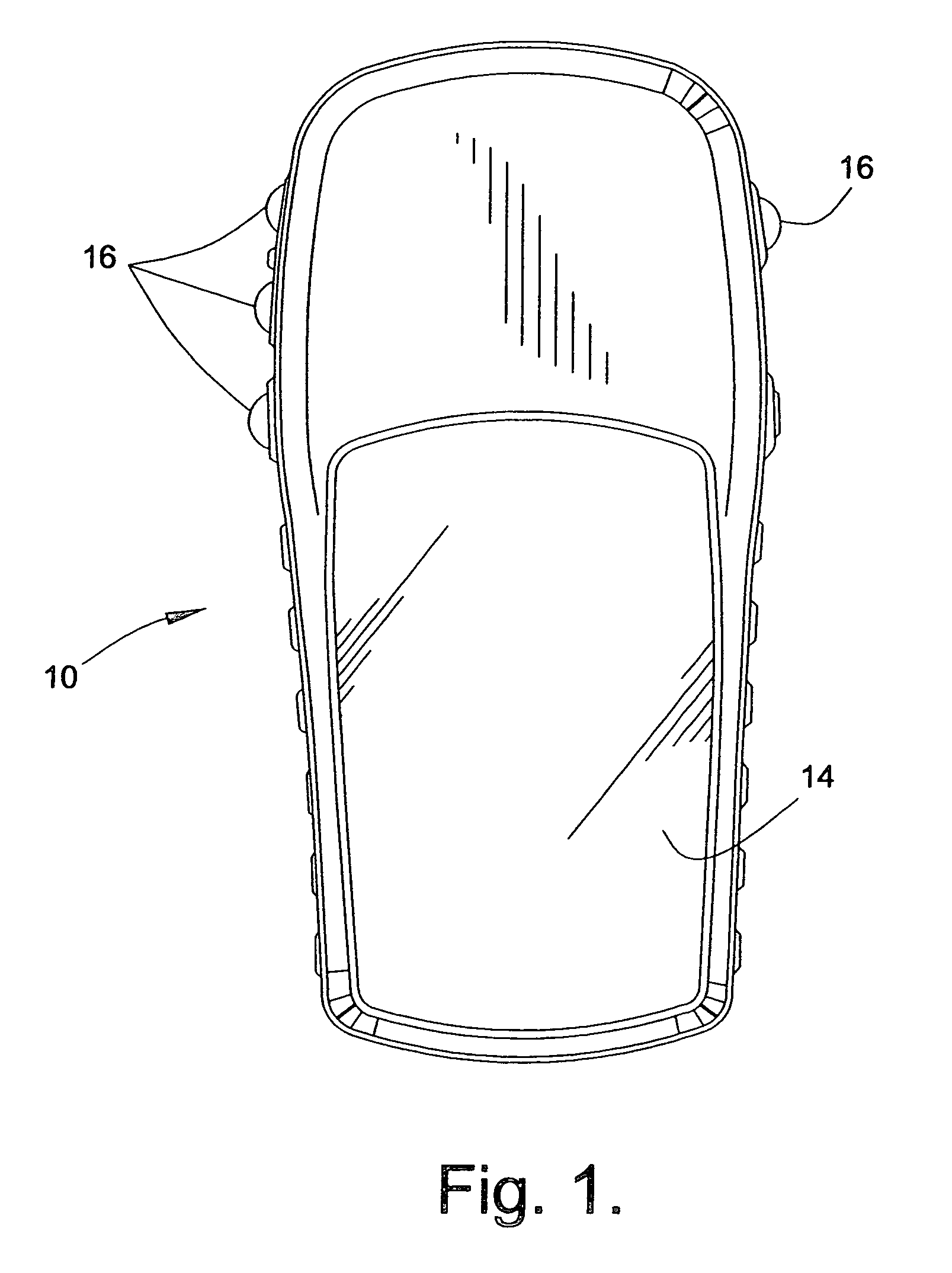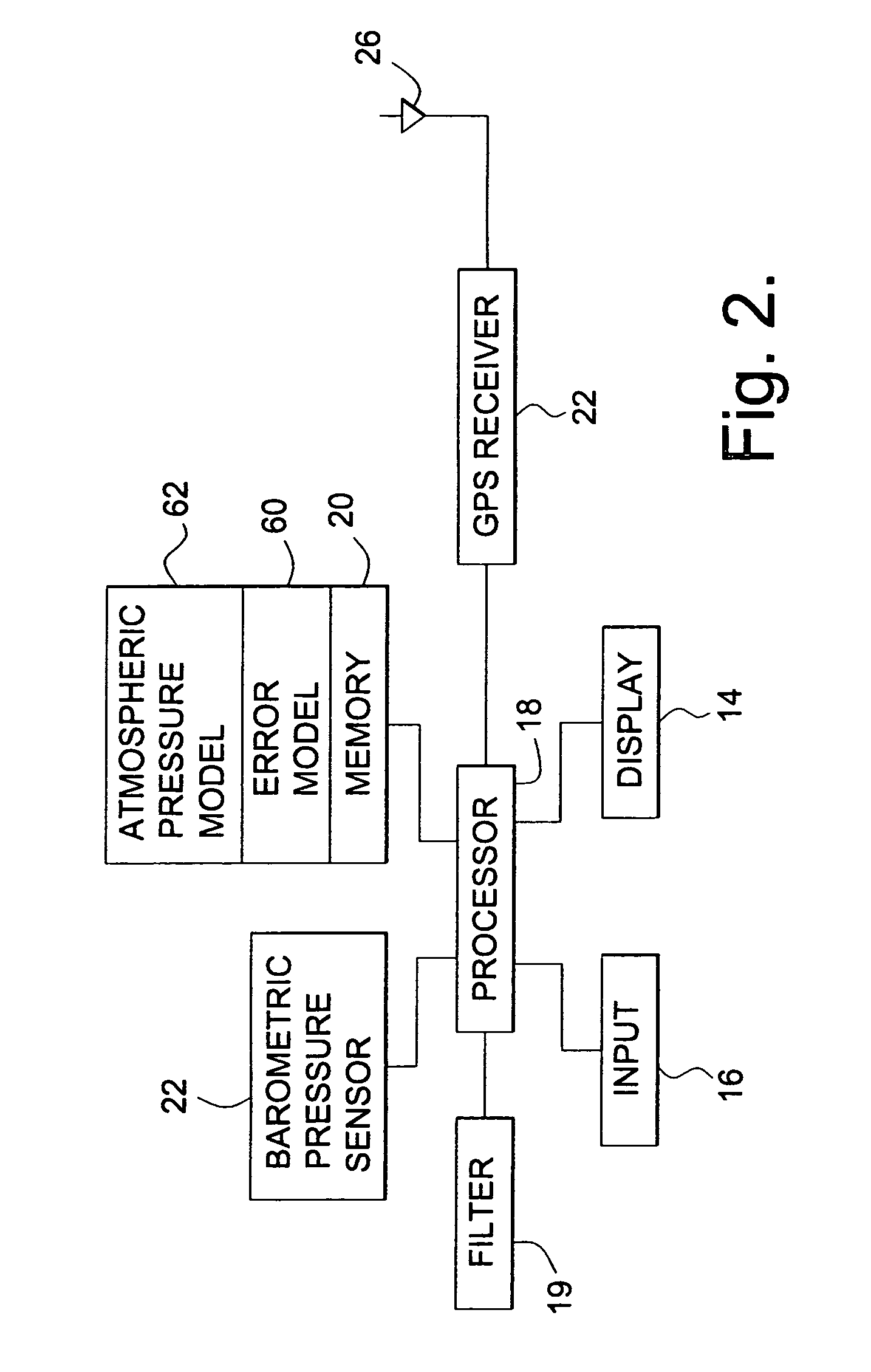Method and apparatus for calculating altitude based on barometric and GPS measurements
a barometric and gps technology, applied in the direction of speed/acceleration/shock measurement devices, instruments, surveying and navigation, etc., can solve the problem of less accurate vertical or horizontal measurements performed by a gps system with respect to altitude or horizontal measurements, more difficult to measure the vertical or altitude component of a users location, and less accurate barometric altimeter measurements than gps derived altimeter measurements
- Summary
- Abstract
- Description
- Claims
- Application Information
AI Technical Summary
Benefits of technology
Problems solved by technology
Method used
Image
Examples
Embodiment Construction
[0025]FIG. 1 illustrates a navigation device 10 that incorporates an embodiment of the present invention. Navigation device 10 includes a housing 12, a display 14, and an input 16, such as preferably a keypad input. Optionally, the input 16 may use a touchscreen. The housing 12 is preferably sized to be a portable unit, although the invention is not limited to portable units.
[0026]FIG. 2 illustrates the navigation device 10 in a block format. The navigation device 10 includes a processor 18 that is connected to memory 20, display 14, input 16 and a barometric pressure sensor 22. Additionally, a GPS receiver 24 is connected to the processor 18 to provide GPS data to the processor 18. A filter 19 may be part of or separate from the processor 18. The filter 19 filters a difference between the GPS and barometer derived altitudes. An antenna 26 is connected to the GPS receiver 24 to receive GPS signals. A power source, such as a battery, battery pack, AC / DC adapter and the like are provi...
PUM
 Login to View More
Login to View More Abstract
Description
Claims
Application Information
 Login to View More
Login to View More - R&D
- Intellectual Property
- Life Sciences
- Materials
- Tech Scout
- Unparalleled Data Quality
- Higher Quality Content
- 60% Fewer Hallucinations
Browse by: Latest US Patents, China's latest patents, Technical Efficacy Thesaurus, Application Domain, Technology Topic, Popular Technical Reports.
© 2025 PatSnap. All rights reserved.Legal|Privacy policy|Modern Slavery Act Transparency Statement|Sitemap|About US| Contact US: help@patsnap.com



